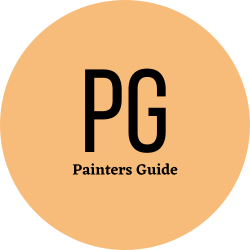The Best Time of Year for Exterior Painting: A Guide to Achieving Picture-Perfect Results
by Hailey White

A transformational project that improves curb appeal and shields your property from the weather is painting the exterior of your house. To ensure the durability and caliber of the finished result, it is essential to pick the appropriate season for exterior painting. This tutorial will examine the ideal season for outside painting as well as the variables to take into account for picture-perfect results.
One of the greatest seasons for outdoor painting is frequently spring. Homeowners are driven to home improvement tasks as the weather heats up and the days become longer. Springtime's moderate temperatures and reduced humidity levels create the perfect conditions for paint to adhere effectively and dry uniformly.
In addition to pleasant weather, spring presents a chance to repair any external damage to your home caused by the previous winter. Painting in the spring aids in crack sealing and shields your house from the upcoming summer's heat and precipitation.
Summer is still a good time for outdoor painting, even though the temperatures and humidity may be higher. This is especially true in areas with more temperate climates. The longer daylight hours and pleasant weather enable faster drying times, assuring appropriate curing of your paint job.
It's essential to check the humidity levels and adjust your painting schedule if you reside in a very humid area, though. Longer drying times and possible finish issues might both result from high humidity. These difficulties can be lessened by painting in the morning or the afternoon.
Fall is frequently seen as the ideal time to paint the outside of a house. The climate is balanced between the risks of excessive heat and cold thanks to the reduced humidity levels and colder temperatures. Your paint is less likely to dry too rapidly or bubble as a result of excessive temperatures when the summer heat subsides.
The weather is more consistent in the fall, with fewer unexpected storms or downpours. You'll also benefit from greater access to all surfaces when the leaves start to fall, which will make painting and surface preparation easier.
There are few exceptions to the rule that outdoor painting shouldn't be done in the winter because of the chilly temperatures and increased humidity. Painting during the winter can be possible in areas with milder winters. To achieve optimum drying and adhesion, it's crucial to select the warmest and driest days.
The season for painting the outside can also be extended by using specialized paints designed for use in cold climates. Winter painting should only be considered, though, if all other choices have been exhausted and all necessary safety measures have been taken.
The lifespan and quality of your paint job can be greatly impacted by choosing the optimal time of year for exterior painting. Despite the benefits and drawbacks of each season, the main objective is to achieve the ideal balance of temperature, humidity, and weather.
Whether you choose the moderate spring temps, the longer summer days, the majority of fall, or the exceptions of winter, careful planning and attention to detail are essential to getting a picture-perfect result. Consult with painting experts to establish the optimal time for your particular climate and conditions before starting your outdoor painting project.
https://www.rodriguezpaintingnj.com/
A transformational project that improves curb appeal and shields your property from the weather is painting the exterior of your house. To ensure the durability and caliber of the finished result, it is essential to pick the appropriate season for exterior painting. This tutorial will examine the ideal season for outside painting as well as…
Recent Posts
- Sophisticated Exterior Painting Methods: Advice for a Perfect Coat
- Lou’s Painting Company Sets New Standard for “Above and Beyond” Painting Services
- Lou’s Painting Company Sets New Standard for “Above and Beyond” Painting Services
- Overland Park KS Painters Provides Insight: Essential Questions to Ask Your House Painter
- Is Stamped Concrete Cheaper than Regular Concrete? Debunking Myths with Columbus Stamp Concrete
